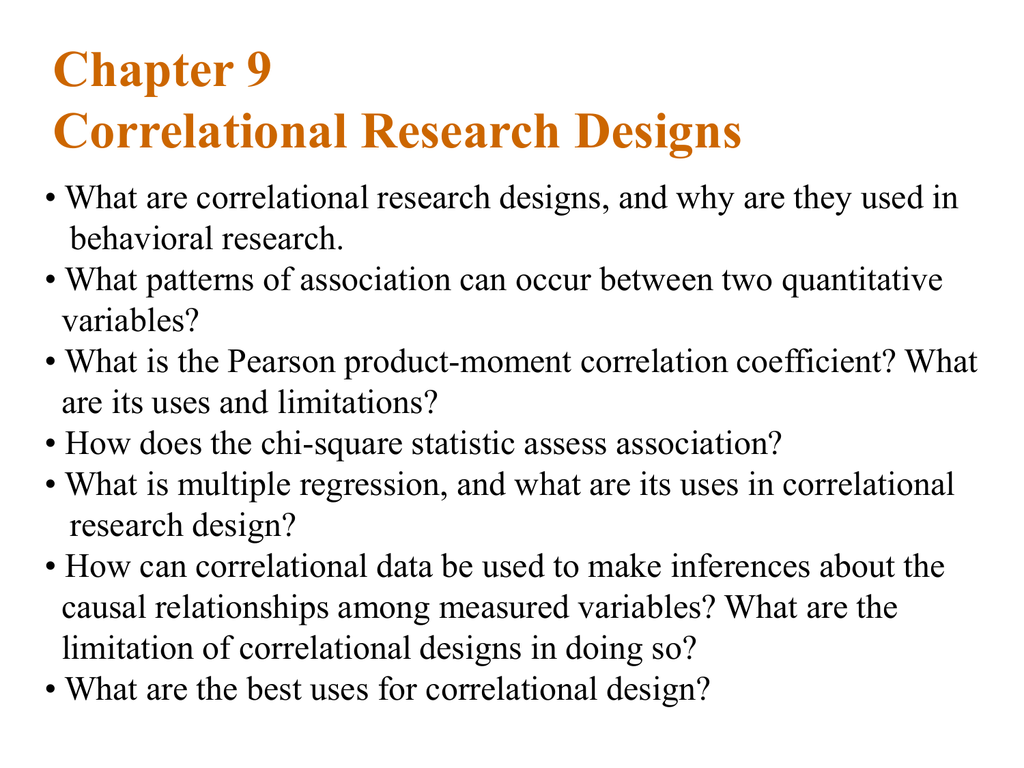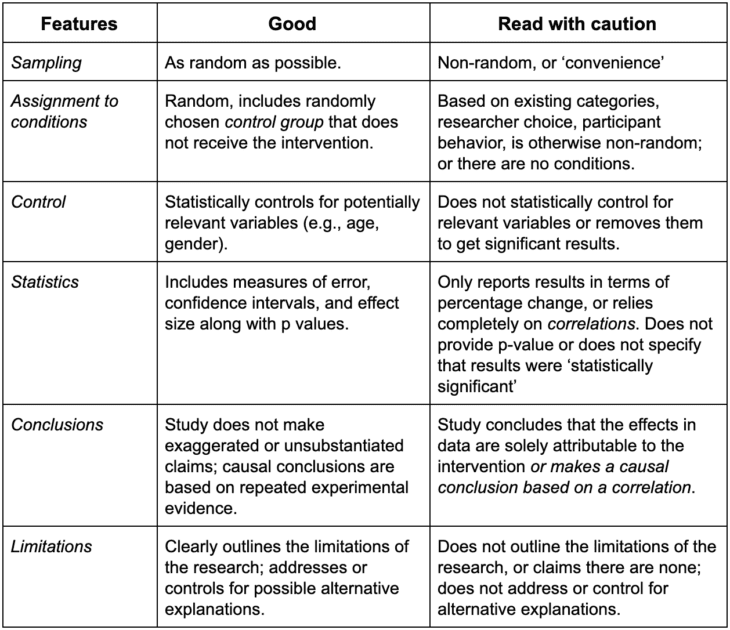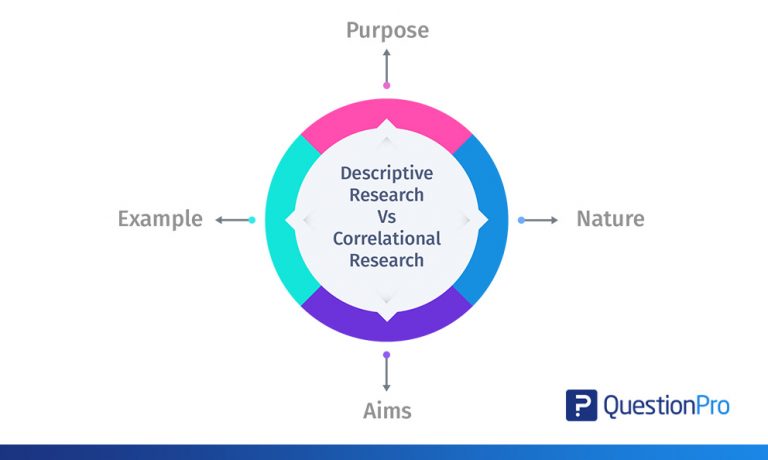A variable in a nonexperimental design that is extraneous to the two variables being studied - an alternative explanation for the observed relationship ex. In a correlational design you measure variables without manipulating any of them.

Chapter 9 Correlational Research Designs
Quasi-experiments usually select only a certain range of values of an independent variable while a typical correlational study measures all available values of an independent variable.

. Correlational methodologies and experimental ones are the two approaches to doing research. Correlation analysis issue even after explanation. You can test whether your variables change together but you cant be sure that one variable caused a.
Test scores will be collected after the students perform solo studies as well as group studies. Correlational approaches Quasi-experimental procedures Simple correlations Non-equivalent control-group Advanced correlational designs techniques Differential research designs Simple linear regression Interrupted time-series designs Advanced regression Single-subject designs techniques Reversal ABA design Path analysis Multiple baseline. In correlational research the goal is to identify patterns of relationships but not cause and effect.
Variables makes this a bivariate correlation Morling 2018. The survey research design. Experimental studies allow the researcher to draw conclusions about one.
In our case we try to assess the relationship between two variables. We begin this chapter with an introduction to the research design that was illustrated here. The goal of experimental research design is to provide more definitive conclusions about the causal relationships among the variables in the research hypothesis than is available from correlational designs.
Importantly with correlational research you can examine only. ByPass Publishing Correlational Research Design A correlational research design looks into correlations between variables without allowing the researcher to control or. Explore quasi-experimental case studies and correlational research designs and recognize how they differ from true experiments.
An experimental design is a randomized study design used to evaluate the effect of an intervention. In a correlational design measuring exercise and anxiety income could lower anxiety and those people have more time to exercise so that could explain both variables without them actually. In correlational research the researcher looks for a statistical pattern linking 2 naturally-occurring variables while in experimental research the researcher introduces a catalyst and monitors its effects on the variables.
Experimental studies allow the researcher to control the variables in the study while correlational ones involve just looking at the data that already exists. Also correlational studies usually show a much weaker effect than experimental ones because of the effect of the many uncontrolled variables which are mixed into each individual instance. A correlational research design is a non-experimental design in which a researcher measures two or more variables and assesses the relationship between or among the variables.
The major difference between correlational research and experimental research is methodology. However in experimental research the researcher actively observes phenomena after triggering a change in the behavior of the variables. In correlational studies a researcher looks for associations among naturally occurring variables whereas in experimental studies the researcher introduces a change and then monitors its effects.
Sometimes you may be better off describing your study as a non-experimental design rather than the more specific term correlational design. There can be significant findings in each type of study. Quasi-experiments usually have more control than a typical correlational study.
Because a correlational study does not manipulate which variable precedes the other it cannot attribute causal direction to the relationship. Here researchers do not intervene and change behavior as they do in experiments. Quasi-experimental designs seek to discover whether an independent variable causes an effect on a dependent one.
Academic performance and studying in a. In an experimental research design the variables of interest are called the independent variable or variables and the dependent variable. There are two variables being studied students performance when they study alone and students performance when they study in a group.
Correlational design simply investigates the relationship of one variable to another. Where participants receive the new intervention which effect we want to study. In correlational research the researcher passively observes the phenomena and measures whatever relationship that occurs between them.
81 An Overview of Survey Designs A nonexperimental research design used to describe an individual or a group by having participants complete a survey or questionnaire is called the survey research design. Correlational research establishes an association between and among variables and the number of variables is based on the study purpose and problem not what kind of study it is. In its simplest form the participants will be randomly divided into 2 groups.
In correlational research the researcher looks for a statistical pattern linking 2 naturally-occurring variables while in experimental research the researcher introduces a catalyst and monitors its effects on the. True experimental research design Quasi-experimental research design Credits. What is a correlational study vs experimental.
The major difference between correlational research and experimental research is methodology. For example a nurse might test whether one nursing intervention works better than. Other variables are controlled so they cant impact the results.
What is a correlational study vs experimental. Understand why for some research projects designs other than. In an experimental design you manipulate an independent variable and measure its effect on a dependent variable.
However I have often seen reviewers get confused about this correlational design vs. It is important to be able to distinguish between correlational and experimental designs because only well-controlled experimental designs allow conclusions about cause and effect. Quasi-experimental and experimental studies test interventions or independent variables presumed causes to see which most influences a dependent variable or presumed effect.

Correlation Vs Causation Tips For Reading Political Research Studies Sister District Project
3 2 Psychologists Use Descriptive Correlational And Experimental Research Designs To Understand Behaviour Introduction To Psychology 1st Canadian Edition

Scielo Brazil An Overview Of Research Designs Relevant To Nursing Part 1 Quantitative Research Designs An Overview Of Research Designs Relevant To Nursing Part 1 Quantitative Research Designs
Correlational Research Designs Types Examples Methods

Comparing Descriptive Correlational And Experimental Studies Youtube

Researcher S Spot Quantitative Approaches In This Module The Four Approaches To Quantitative Research Are Described And Examples Are Provided Learning Objectives List And Explain The Four Approaches To Quantitative Research Provide

Descriptive Research Vs Correlational Research Questionpro

Difference Between Correlational And Quasi Experimental Research Youtube
0 comments
Post a Comment